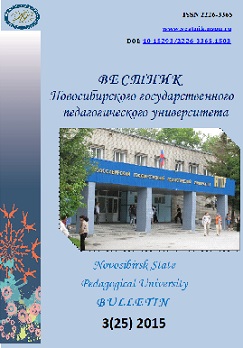ФИТОЦЕНОТИЧЕСКАЯ СТРУКТУРА ГРУППИРОВОК ПОЧВЕННЫХ ВОДОРОСЛЕЙ И ЦИАНОБАКТЕРИЙ ГОРОДСКИХ ГАЗОНОВ (НА ПРИМЕРЕ Г. НОВОСИБИРСКА И Г. ГОМЕЛЯ)
PHYTOCENOLOGICAL GROUP STRUCTURE OF SOIL ALGAE AND CYANOBACTERIA OF URBAN LAWN (ON THE EXAMPLE OF NOVOSIBIRSK AND GOMEL)
Author(s): Yulia М. Bachura, Anastasia Gennadevna BlagodatnovaSubject(s): Essay|Book Review |Scientific Life
Published by: Новосибирский государственный педагогический университет
Keywords: Soil algae; cyanobacteria; urban soil structure; phytocenological groups of algae and cyanobacteria; lifeforms; morphological types; the dominant species of algae and cyanobacteria.
Summary/Abstract: Just soils studied cities (Novosibirsk and Gomel) found 63 species of soil algae and cyanobacteria, belonging to 42 genera, 38 families, 19 orders of 7 classes, 4 departments. Depending on the degree of anthropogenic pressure (loaded highways) changes the ratio of the dominant taxa of different ranks. Despite some uniformity urban algotsianobakterioflory (Gomel and Novosibirsk), traced some specificity taxonomic structure that is associated with soil and environmental characteristics of the soils of urban lawns. Along with the characteristics of flora takonomicheskimi changes phytocenotic organization algocyanobacterial groups can also serve as indicators of the state of the environment, particularly to diagnose the degree of stress. Depending on the intensity of anthropogenic pressure (loaded highways) changes the ratio of the dominant species, the ratio of life forms and morfotopov in the algocyanobacterial groups. Along with the same type of organization phytocenotic groups of algae and cyanobacteria, observed certain specifics of the dominant species, the spectrum of life forms and morphological types, which is associated with soil and environmental characteristics of the soils of urban lawns (Novosibirsk and Gomel).
Journal: Вестник Новосибирского государственного педагогического университета
- Issue Year: 2015
- Issue No: 3
- Page Range: 82-93
- Page Count: 12

